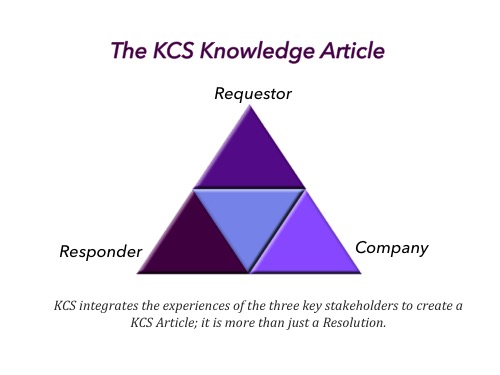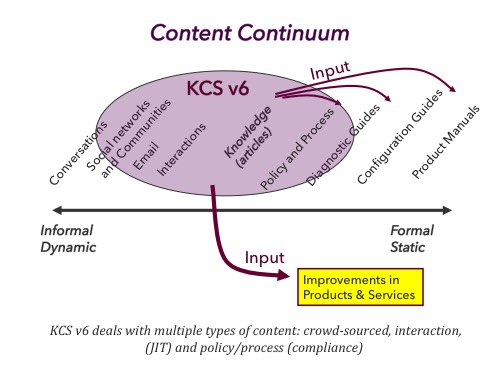The KCS Article
The KCS article is the content, or knowledge, created by using the KCS methodology. Articles can be used for many different types of content including a simple question, a complex problem, or a procedure. KCS articles have a little bit of structure, and they integrate the perspective of three groups: requestor, responder, and the organization. The requestor's perspective includes their experience of what is happening as well as information about the environment relevant to their situation.  The issue statement is the requestor's view of what is happening and it is captured in their context (words and phrases). The responder's perspective is captured in the resolution and cause (if appropriate). The organizational perspective is represented in metadata with information such as the article state, the date created, number of times the article has been used, modification history, and the date last modified.
The issue statement is the requestor's view of what is happening and it is captured in their context (words and phrases). The responder's perspective is captured in the resolution and cause (if appropriate). The organizational perspective is represented in metadata with information such as the article state, the date created, number of times the article has been used, modification history, and the date last modified.
The KCS article has a structure or format that is defined in the content standard and is intended to cover a wide range of issues including:
- "How-to" or Q&A
- Interoperability issues
- Configuration issues
- Defects
- Diagnostic procedures
- Procedural documentation
The KCS methodology is leveraged by organizations to implement and enhance issue resolution and processes.
Each organization has a broad spectrum of content that contains valuable, reusable information. Historically, technical content like manuals and design documents has been very structured, often following rigid templates, and static—often only altered during product or service updates. However, as collaboration has become more real-time, valuable information is being shared in dynamic forms like instant messaging, email, and telephone conversations.

KCS articles (just-in-time content) are typically somewhere in the middle of this spectrum. KCS provides a methodology and set of practices for consistently capturing information in a way that is both structured enough to be useful, and dynamic enough to suit the rapidly changing environment. In addition to drawing from many content sources and creating a context-sensitive knowledge base for daily use, KCS processes generate new material that may reference existing content and feed into other business content like product designs, marketing plans, field training, and documentation.
